By Sam McGowan
If there is a group of men whose mention evokes thoughts of heroism, it is those who were surrendered to the Japanese on Bataan and subsequently became part of the “Death March” up that peninsula in the Philippines to POW camps in central Luzon. These American and Filipino soldiers endured deprivation and inhumanity at the hands of the youthful Japanese soldiers responsible for their transport, earning them their rightful place in history for their suffering.
However, there was another group of soldiers, sailors, and airmen whose actions after the American surrender were truly heroic, men who sometimes endured deprivation even worse than those of the POWs and who, if they fell into Japanese hands, were subjected to terrible torture followed by beheading, often after having been forced to dig their own graves.
Plan Orange and the Abandonment, Starvation of Troops
The American forces in the Philippines were defeated largely by a prewar operational plan that, in the event of an invasion, called for them to declare Manila an open city, withdraw onto the Bataan Peninsula, and then to set up a defensive line while waiting for reinforcements and supplies to arrive from Hawaii and other U.S. locations. Plan Orange, as it was called, was predicated on the timely arrival of the U.S. Pacific Fleet, but the Japanese ruled out that possibility with their preemptive strike on the fleet’s base at Pearl Harbor on December 7, 1941.
Furthermore, even though Plan Orange called for the U.S. forces to hold out on Bataan and the fortress island of Corregidor for up to six months while awaiting reinforcement, insufficient rations had been stored on the peninsula to sustain a large force for any length of time. Even on starvation rations, the troops had barely enough supplies to hold out for more than a few months.
General Douglas MacArthur executed Plan Orange believing that help was on the way, but in reality President Franklin Roosevelt had written off the islands a few days before Christmas in favor of support of the war in Europe. The American soldiers, sailors, and airmen in the Philippines had been abandoned, along with their Filipino charges, although they did not know it. For weeks they held out against the Japanese while their supplies rapidly dwindled, until they were soon on starvation rations.
In March 1942 Roosevelt personally ordered General MacArthur to Australia, where the U.S. commander of the Philippines believed he was to organize a relief force to save the men he was leaving behind under protest. Before he left he told Lt. Gen. Jonathan Wainwright, his successor, not to surrender under any circumstances, a command Wainwright honored as long as it was humanly possible. The forces fighting on Bataan were under the command of Maj. Gen. Edward King. By early April, they were starving, many were sick with a variety of illnesses, and they had become generally demoralized with no hope of relief. Even though there was plenty of ammunition, the lack of food had become the determining factor in their ability to fight.
Maj. Gen. King Surrenders All Forces on Bataan
On April 8, 1942, King sent his chief of staff to Corregidor to confer with Wainwright and inform him of the situation, that the Bataan troops were out of rations and could not reasonably be expected to continue to resist. That night, King, believing that his men would be annihilated, decided to surrender all forces on Bataan. King’s decision led to the surrender of the largest number of U.S. troops in military history. The nearly 11,000 defenders on Corregidor held out for another month before Wainwright decided to capitulate after Japanese troops landed on the island.
When King surrendered his troops, many of his men looked upon it as a blessing. As prisoners, they expected to be fed and receive medical treatment. In actuality, the Japanese did treat the surrendered Americans well for the first few days. It was not until the forced march to prison at Camp O’Donnell began that things deteriorated.
While the vast majority of U.S. troops accepted the surrender willingly, there were some who had decided never to surrender, but to take to the hills and attempt to escape the islands and make their way to Australia. Several of these men were officers of the 26th Cavalry Regiment, a Filipino unit with American officers that had been based at Fort Stotsenberg, a plush base some 75 miles northwest of Manila. Before December 8 (Philippine time), the men of the 26th spent their time drilling troops and playing polo on the well-groomed field at the fort. After the Japanese attack, the regiment deployed its troops to various locations on Luzon.
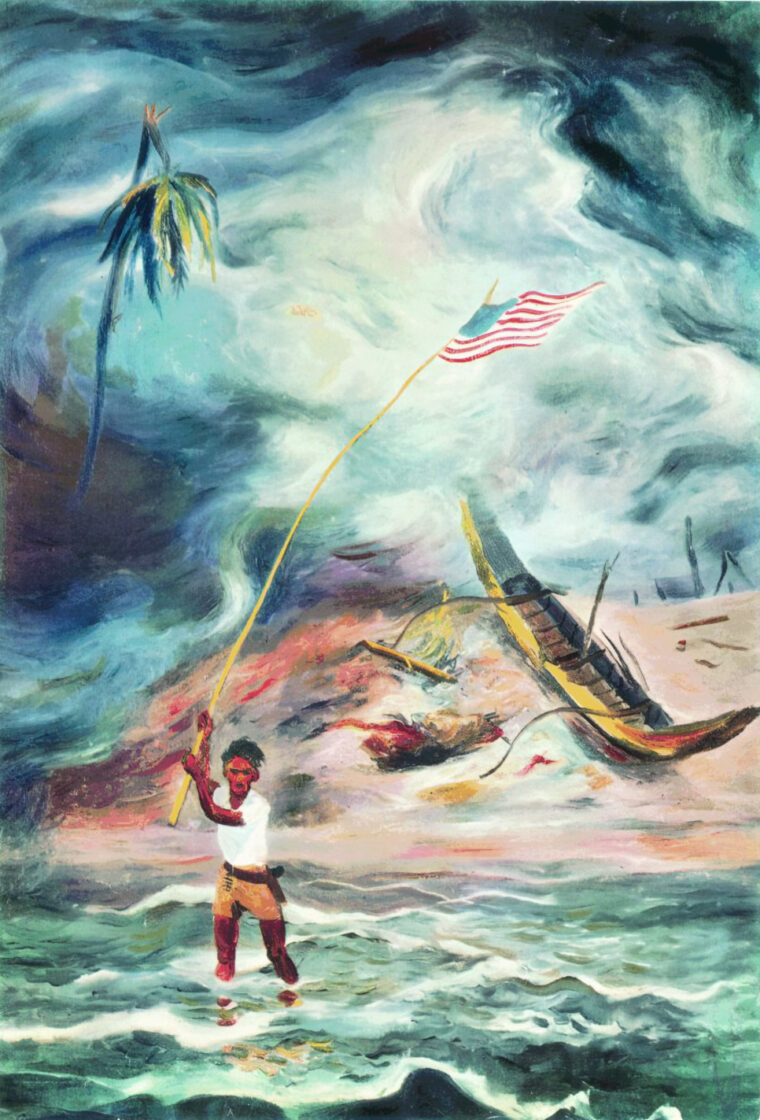
When King surrendered there were still many Americans elsewhere in the Philippines, including Captain Ralph Praeger, a 26th Cavalry company commander whose men had been operating in the mountains of northern Luzon. Captain Joe Barker and Lieutenant Ed Ramsey were on Bataan when word of the surrender came, but they and dozens of others, Filipinos and Americans, elected to evade capture. Their plan was to make their way southward to Mindanao, where the last Americans still held, and from there to Australia. Carrying a severely ill soldier with them, Private Gene Strickland, Barker and Ramsey managed to evade the Japanese and climb high over the top of the rugged volcanic Mount Marivales. They then followed the mountain ridges northward along the Bataan Peninsula.
As the two officers and Strickland approached the northern reaches of Bataan, they encountered Corporal John Boone, formerly of the 31st Infantry. Boone told them he had escaped from Bataan, but instead of trying to reach Australia, he planned to remain in the islands and join the resistance. Colonel Claude Thorpe, another cavalry officer from Fort Stotsenberg, had previously been sent by MacArthur to form a resistance movement in central Luzon. Thorpe’s headquarters was on the slopes of Mount Pinatubo, a then-dormant volcano that overlooked Fort Stotsenberg and Clark Field. (Pinatubo erupted in the 1990s and covered much of the area with ashen mud.)
Horrors of the Death March
Barker, Ramsey, and Strickland were led to a refuge set up by American planters Bill and Martin Fassoth. There they learned of the horrors of the Death March. By this time the two officers had already made up their minds to join the resistance. The Fassoths gave them food and supplies along with a pair of Negrito guides to lead them to Thorpe’s camp. Negritos are tiny Filipino tribesmen who make their home in the Zamabales Mountains that overlook Fort Stotsenberg and Clark Field.
Ramsey was unable to make the climb to Thorpe’s base camp due to an infected foot; he waited at the village of Timbo while Barker went ahead. There were several Filipino soldiers and civilians in Timbo who were eager to join the resistance. While waiting for Barker to return, Ramsey decided to take matters into his own hands and began to set up a camp some two kilometers from the village.
On May 15, 1942, Ramsey established the east central Luzon Guerrilla Area and began assigning duties and military rank to the Filipinos who came to him. He finally met with Thorpe on May 24, and when asked to join the resistance, he informed the colonel that he already had. Thorpe told Ramsey that his personal command would be called the Luzon Guerrilla Force, with northern Luzon under the command of Captain Ralph Praeger, west Central Luzon under Captain Ralph McGuire, southern Luzon under Captain Jack Spies, and east central Luzon under Captain Joe Barker. Ramsey was to be Barker’s deputy.
The Islands, Ripe for Resistance
Another guerrilla effort in northern Luzon was organized under colonels Martin Moses and Arthur Noble, two officers who had been with the 11th Infantry Division and who had been in northern Luzon before the withdrawal into the defenses on Bataan. Other resistance efforts were being organized elsewhere in the islands, including Mindanao where a former mining engineer and Army reservist from Colorado named Wendell Fertig began setting up an organization. American officers and non-commissioned officers (NCOs) were scattered throughout the islands, while literally thousands of Filipino soldiers had managed to avoid capture by the Japanese. The islands were ripe for a resistance movement, even though it took some time for it to be organized and gain momentum.
Surprisingly, even though the officers and men remaining in the Philippines were officially listed as Missing in Action, MacArthur’s headquarters in Australia was in contact with many of them through radio and runner. Radio contacts early in the war were primarily with the forces in Mindanao, who had held out the longest, and who had moved into the mountains and jungles when it became apparent that the Allies could not hold the island and that capture of the airfields was imminent.
There were a few short-range radios on Luzon with which resistance groups were able to communicate with American submarines that surfaced offshore at night. Messages were passed back and forth by runners from the radio sites to officers in other parts of the islands. MacArthur’s orders to the guerrillas were to gather intelligence and organize an infrastructure among the civilians.
Even though they were free, the American guerrillas were subject to deprivation and illness just as were the POWs at Camp O’Donnell and Cabanatuan. Food was scarce in many parts of the islands under normal circumstances, and practically nonexistent under the Japanese occupation. Malaria, dysentery, beriberi, and other diseases ravaged the American resistors, all of whom suffered from the effects of malnutrition. But at least they were free and still had the means to resist.
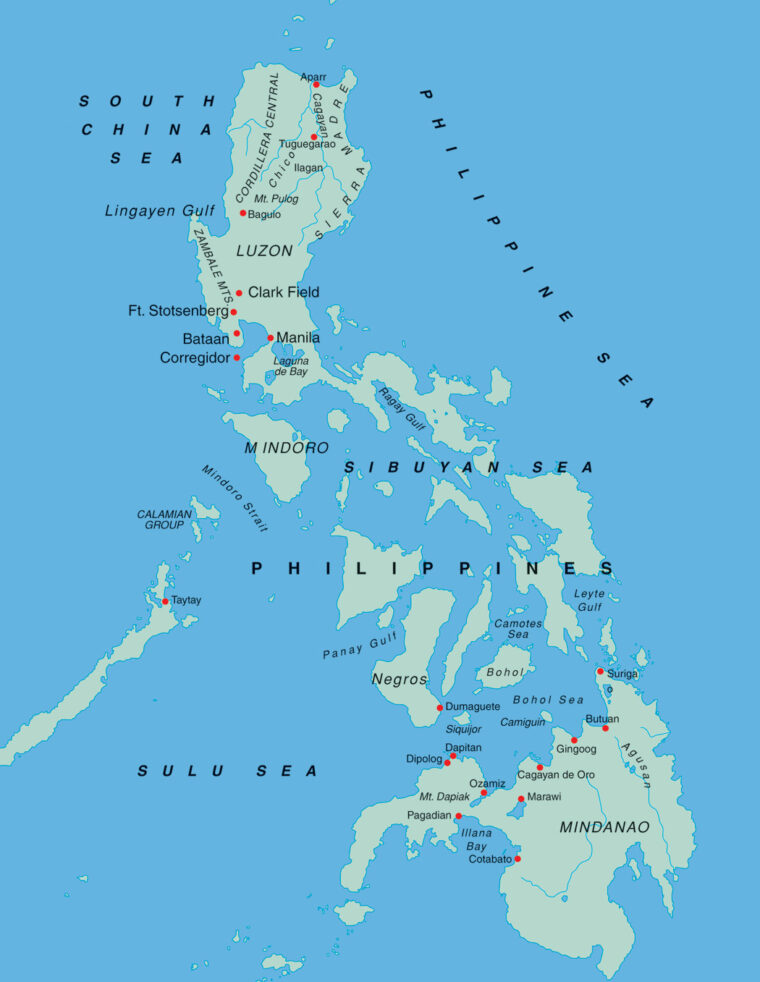
Guerrilla Warfare—Making The Rules Up as They Go
None of the Americans had any experience with guerrilla warfare, so they had to make the rules up as they went along. Hundreds, even thousands, of Filipinos had military experience, and some had managed to escape from Bataan. The American officers awarded them commissions or positions as NCOs. Many of the Filipinos organized units of their own, then placed them under the command of the U.S. Army officers who had been given official positions by Colonel Thorpe.
Joe Barker and Ed Ramsey relied on the principles of guerrilla warfare set forth by Chinese Communist Mao Tse-tung, who at the time was leading the Communist revolution in China. Barker had found a copy of Mao’s “little red book” and used it as a guide for organization. One of Mao’s principles was to gain the confidence of the people; another was to avoid combat with superior units and to fight only when the guerrillas had the advantage.
As guerrilla strength began growing in the islands, the Japanese became more and more aware of their existence and their American leaders. General Masao Baba, chief of Japanese counterintelligence in Manila, organized an all-out effort to eradicate the Filipino guerrillas and their American leadership. Baba gave responsibility for finding the guerrillas to Colonel Akira Nagahama, chief of the kempei-tai, the Japanese military police. The Japanese were relentless in their efforts to discover the locations of the camps and to kill or capture the leaders.
Baba utilized the efforts of a pro-Japanese Filipino organization that had supported the Japanese before and during the invasion. The Filipino collaborators wore no uniforms and could easily slip in among the population to ferret out information and put the finger on the guerrillas. Baba also offered monetary rewards for information, and literally put prices on the heads of the Americans. Captain Ralph McGuire, commander of the guerrillas in western Luzon, was one of the first to be betrayed. One of his own men killed him and cut off his head, then took it to the Japanese for the promised bounty.
An Additional Enemy: The Huks
The Japanese were not the only enemy faced by the guerrillas. The Philippines had its own Communist guerrilla movement, the Hukbalahaps. Although the Huks claimed to be allied with the Americans, they frequently fought the non-Communist guerrillas and made life harder than it already was for the American officers. Most, if not all, of the guerrilla leaders had run-ins with the Huks at one time or another, particularly those in central Luzon where the Huk movement was strong.
Although the Huks opposed the Japanese, they were Communists and had their own political agenda, which did not include an alliance with the United States. They sometimes claimed they were acting on orders from the American guerrilla commanders, when in reality their actions were often counter to the overall guerrilla movement. In essence, the Huks were fighting their own war and would continue to do so long after the Japanese were defeated.
Manila lay inside the region assigned to Joe Barker and Ed Ramsey, so the two were determined to organize guerrillas within the city itself. But first they went to the camp run by Bill Fassoth for some rest and medical treatment. They planned for Ramsey to go to the city, but the Army doctor at Fassoth’s camp ruled otherwise. He released Barker but told Ramsey he needed more rest.
Barker departed for Manila and left Ramsey in the camp. Surprisingly, in the fall of 1942 there were more than a hundred Americans at Fassoth’s camp, many of whom had no interest in resisting the Japanese and who, quite frankly, resented the guerrillas’ presence. None of them was interested in joining the guerrilla movement under the mistaken belief that, if they were captured, they would receive humane treatment as POWs. They were afraid that the Japanese would consider them to be resistors instead of stragglers.
Americans as Renegades
The Americans who chose to resist were concerned about their own military status. Technically they were renegades in that their units had formally surrendered to the Japanese, but they had refused to obey the surrender order. This was a fact not lost on the Japanese, who were quick to torture the guerrillas viciously, then execute them as war criminals.
Before he left for an organizing trip around Luzon prior to entering Manila, Barker told Ramsey to journey south when he was able and to meet with John Boone in hopes of recruiting him and his guerrillas to their command. In October Ramsey felt well enough to travel, and he found Boone eager to join with them. Ramsey promoted Boone to captain on the spot, taking the former U.S. Army corporal by surprise. The commission, like that of many others made by the guerrilla leaders, was recognized by the U.S. Army when word reached MacArthur’s headquarters.
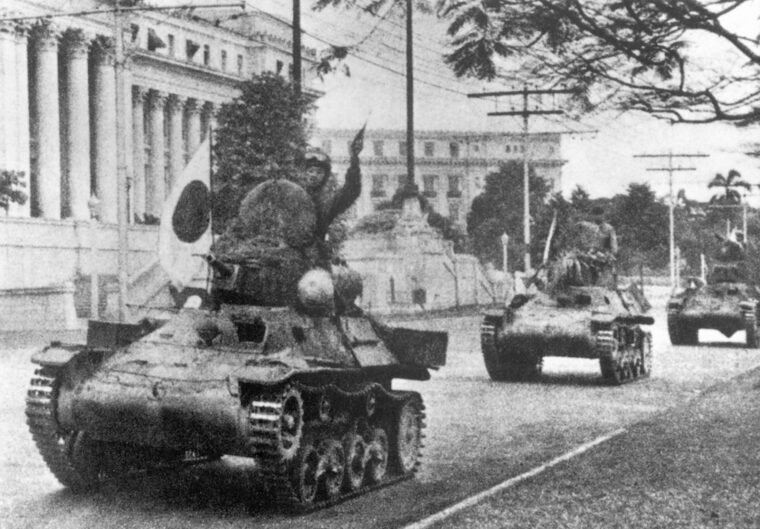
The two remained together for several months, traveling around Bataan and southern Luzon recruiting guerrillas. One act Ramsey performed was to marry Boone to a young Filipina woman. Ramsey himself had taken a vow with Barker to remain celibate, under the belief that any romantic activities could have an adverse effect on morale. It was a vow that he would later break.
As the war dragged on, Colonel Nagahama’s efforts were beginning to pay off. Captain Jack Spies had been killed during his journey south to take command of the guerrilla forces in southern Luzon. In December Ramsey learned through Joe Barker that Thorpe had been captured and was being held prisoner in Fort Santiago in Manila along with other captured guerrilla leaders, Filipinos as well as Americans.
Guerrillas Hear About Vicious Torture
By now the resistance had developed a highly effective communications network, and the guerrillas knew that those who had been captured were being tortured viciously by the Japanese. In January 1943, Ramsey received a message from Manila that Joe Barker had been betrayed and captured, then imprisoned in Fort Santiago along with Colonel Thorpe. Ramsey was now the senior officer in the region.
The guerrillas in northern Luzon had a radio for a time and were in contact with MacArthur’s headquarters in Australia. When increased Japanese activity forced Ramsey to move north, he elected to take the most direct route, right through Fort Stotsenberg, which was now the main Japanese base on Luzon. He and two Filipinos crossed the runways at Clark Field under the cover of darkness, then continued northward.
When Ramsey met Ralph Lapham, who also had been a lieutenant in the 26th Cavalry, he learned that they were now both majors, on orders from MacArthur’s headquarters in Australia. Joe Barker was now a lieutenant colonel; several of the other guerrillas had also been promoted, including Thorpe. Lapham and Ramsey compared serial numbers and learned that Ramsey was the senior of the two, so Lapham subordinated himself to Ramsey’s command.
Ramsey remained in northern Luzon with Lapham for several months. In April 1943 they traveled to Lingayen Gulf to make contact with Charles Putnam, an American miner and U.S. Army reserve officer who had spent most of his life in the Philippines. During the visit, Putnam advised Ramsey that a guerrilla was a “king” and must act like one if he wanted to keep his life. He also reminded Ramsey that the Igorot and Ilongot tribesmen who lived in the mountains were cannibals by tradition, and that they relished the war because it gave them the chance to feast on human flesh.
Love at First Sight for Lieutenant Ramsey
While in Lapham’s camp, Ramsey met a Filipina friend of his when she came up from Manila for a visit. Ramona Snyder had nursed Lapham back to health after a bout with malaria and dysentery. He invited the young woman to come up from Manila to help celebrate his birthday in May 1943.
When Ramsey saw the woman, it was love at first sight. He remembered his vow of celibacy, but then threw it out the window of the hut in which they were staying when he learned that there was nothing between Mona Snyder and Lapham but friendship. The young Filipina woman, who would later be commissioned a U.S. Army captain, became a major source of intelligence for Ramsey after she returned to Manila.
Shortly after Lapham’s birthday party, Captain Ralph Praeger was captured and taken to Cabanatuan prison where many of the POWs from Bataan were being held. Reports from Filipinos who were able to get close to the camp were that Praeger was being tortured and placed on display. Praeger’s capture coincided with the anniversary of the fall of Corregidor and the American surrender of the Philippines the previous year. A general malaise set in among the Filipino guerrillas, which Lapham and Ramsey both noticed. While the Filipinos were not turning toward the Japanese, their enthusiasm for the resistance seemed to be waning.
Seeing the lessening of resolve among his Filipino charges, Ramsey began thinking about ways to promote more enthusiasm. Problems were developing among the cadres in Luzon due to the lack of activity, and Ramsey determined to do something about it. His first action was to do away with the Maoist principles they had been following, and reorganize his command along military lines by dividing Luzon into military districts and assigning commanders and regiments to each district.
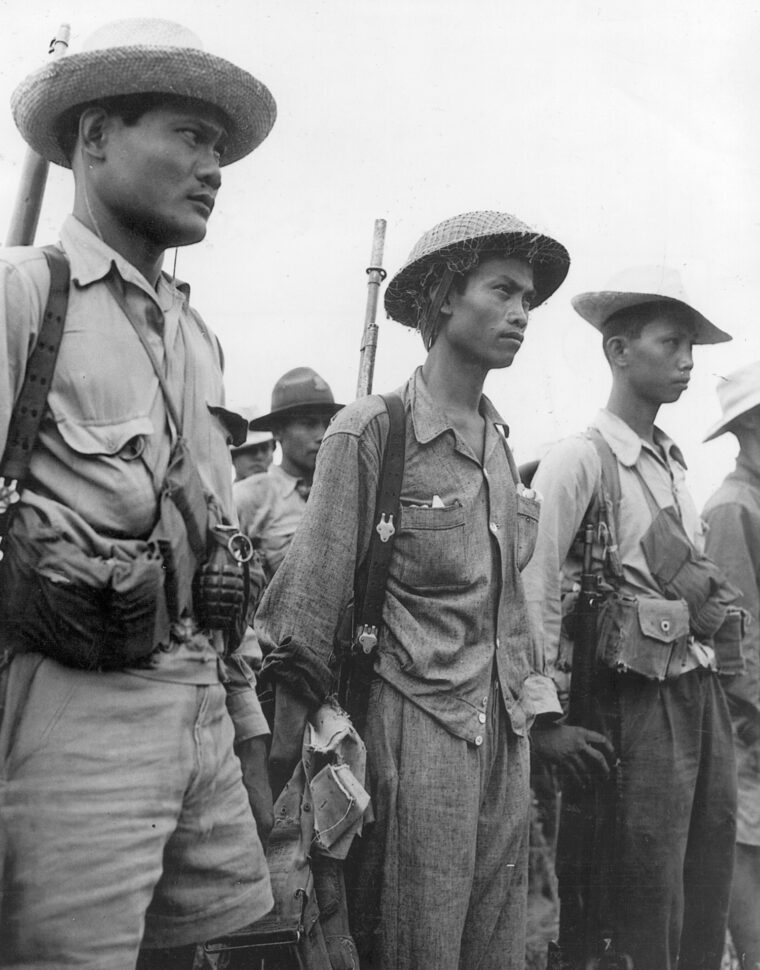
Thwarting Japanese Plans
In the fall Ramsey learned from Mona Snyder that the Japanese intended to establish a new Republic of the Philippines, and the first act of the new government would be to declare war on the United States. Snyder had also brought Ramsey into contact with General Manuel Roxas, a former member of MacArthur’s staff who had elected to remain behind in the Philippines rather than be evacuated to Australia. Roxas had been imprisoned by the Japanese but had been released when he agreed to take a place on the Filipino governing commission. Through Roxas, Ramsey determined to take control of the governing commission by having loyal Filipinos elected.
When the Japanese puppets attempted to establish a military draft through the commission, the proposal was defeated. The effort by the Japanese collaborators to declare war on the United States was also defeated. Later, the Japanese did establish a puppet government that did declare war in September 1944, but by that time the Allies were clearly winning and the declaration was meaningless.
In November 1943, Ramsey left northern Luzon for Manila. He had received a message from General Vincente Lim, a West Point graduate who had remained in the Philippines, been captured, and then released. Lim wished to discuss the unification of all the guerrilla forces in Luzon. Ramsey made the trip along with two Filipino sergeants in a boxcar filled with palm leaves. Upon reaching the outskirts of Manila, Ramsey was placed in the hands of Walter Raeder, the technical director of the Manila Gas Company. Although he was a Swiss national and therefore technically neutral, Raeder was active in the resistance. Ramsey made him a major on his staff in charge of chemical munitions. Raeder’s knowledge would be useful in the future.
Another guerrilla organization, which had been organized by Colonels Moses and Noble, remained in the mountainous region of northeastern Luzon. When they were also captured by the Japanese, their command fell to Colonel Russell W. Volckmann, a West Pointer who, like Moses and Noble, had been with the 11th Infantry. Volckmann attempted to take control of all of the guerrillas in Luzon, but his efforts were rebuffed by Lapham and Ramsey, perhaps because of the difference in philosophies between the cavalry and the infantry. Also, Lapham and Ramsey—along with other officers—had been placed in their commands by Colonel Thorpe, MacArthur’s appointed resistance leader, who was now imprisoned in Manila along with Joe Barker.
Lapham came into command of his area when Ralph Praeger was captured, then subordinated himself to Ramsey due to their respective dates of rank. Volckmann and Captain Donald Blackburn carried out guerrilla operations in northeastern Luzon.
Wendell Fertig and His Organized Forces
Wendell Fertig’s organization on Mindanao was the first to be really organized, largely because it was hundreds of miles closer to Australia and easier to reach by submarine and radio wave. Fertig was in close contact with MacArthur’s headquarters from early 1943, and with the contact came supplies and American agents who came in by submarine. But Fertig’s operation was severely hampered when his men broke and ran while under Japanese attack, forcing him to flee into territory controlled by the fierce Muslim Moros. Over the next year he attempted to rebuild his organization, but it was not until the spring of 1944 when American bombers began raiding Mindanao that he and his guerrillas were able to again become an effective force.
Although it would be many months before word reached the guerrillas, in December 1943 the Japanese finally finished with their torturing of the captured resistance officers and decided to dispose of them. Colonels Thorpe, Moses, and Noble and Majors Barker and Praeger were removed from their prison at Fort Santiago and taken to a Chinese cemetery on the outskirts of Manila. There they were forced to dig their own graves in a pouring rain, then each man was made to kneel over the grave and was beheaded.
After the guerrillas established firm contact with Australia, supplies began flowing into the islands by submarine. Shortly after Christmas 1943, Ed Ramsey learned that an Allied Intelligence Bureau agent supposedly carrying a radio had landed on Luzon by submarine and wanted to meet with him. The man was Sergeant Ben Harder, but it turned out that the radio was on the island of Mindoro. Harder and Major Lawrence Phillips had been sent to the Philippines to set up a coast-watching station on Mindoro. When Phillips learned that Ramsey was in Manila, he sent Harder to make contact with him, but he did not take the radio with him.
Disappointed at the news that the radio was on Mindoro, Ramsey decided to go south to meet with Phillips and retrieve it. He made the treacherous journey by Filipino batil, a small fishing boat, only to learn that Phillips’ camp had been raided. As it turned out, Phillips had been killed and the precious radio was gone.
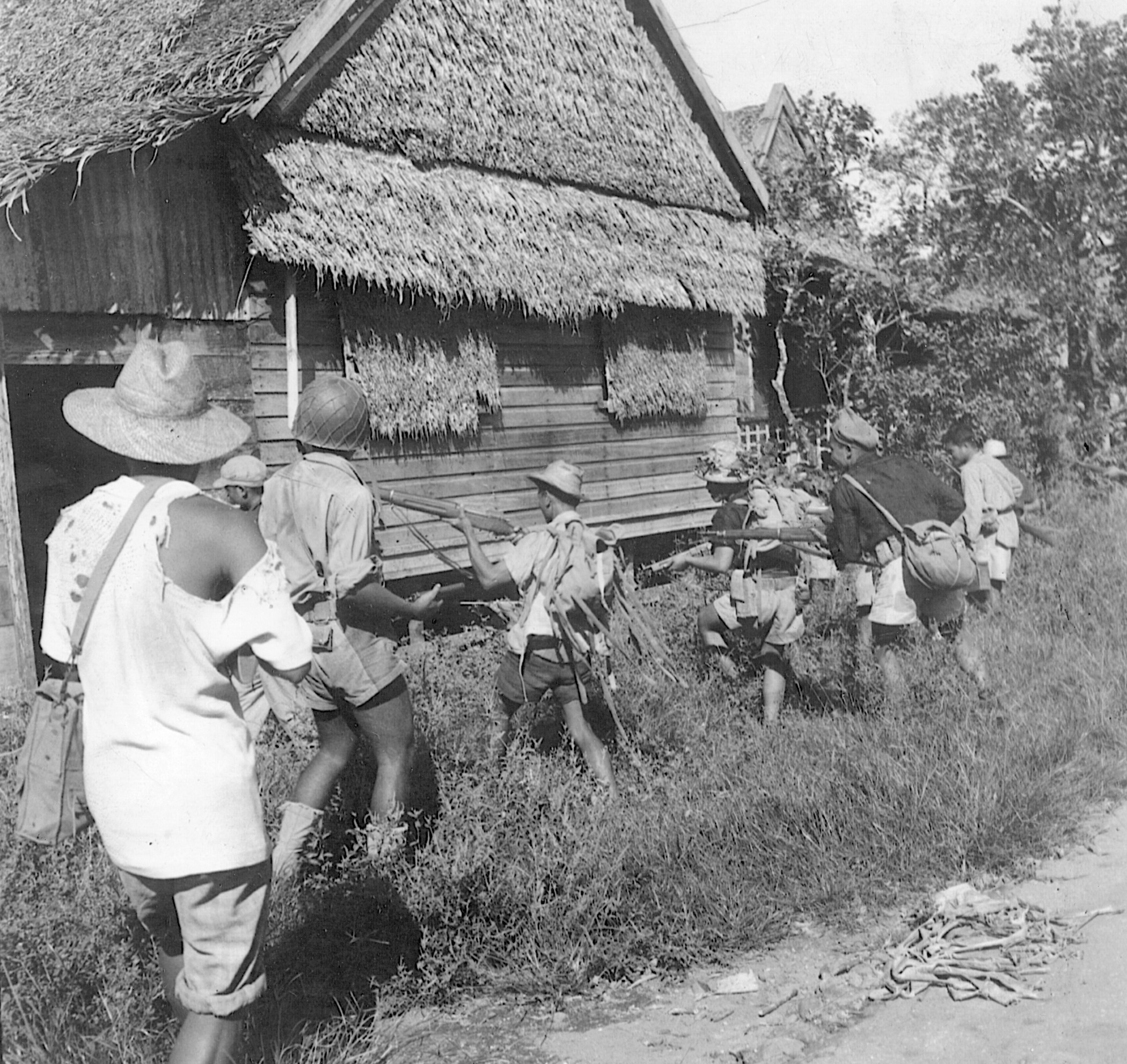
Return to Luzon
While on Mindoro, Ramsey learned that a submarine was coming to the southern end of the island and that he could be evacuated. When he declined the offer he was handed a note that turned out to be a radio message from MacArthur telling him to return to Luzon and take command of his guerrillas. He was told that if he had chosen to take the submarine, he was to be given the order.
When Ramsey returned to Luzon, he got the tragic news of the execution of the American and Filipino guerrillas who had been captured. But he also learned that, even as he had been making his way south to retrieve a radio, a Filipino officer had been making a journey of more than a thousand miles north from the island of Negros with a radio for him.
With his own radio, Ramsey was finally able to make direct contact with MacArthur’s headquarters, which by this time had moved north to New Guinea. The Southwest Pacific Area of Operations headquarters was primarily interested in intelligence, but in mid-1944 Ramsey was instructed to begin sabotage operations against Japanese targets in and around Manila. His headquarters were now at Balagbag in the mountains immediately north of Manila, close enough to the city that they could see it. With the sabotage order, the services of the Swiss chemist were called for.
Raeder fabricated a device consisting of two lead cylinders soldered together with a hollow spot in between. Each cylinder was filled with black powder. Ignition was achieved by a small amount of sulfuric acid that ate through a copper plate to ignite a dozen match heads. The matches ignited the powder, causing an explosion, which would in turn set off a chain reaction if the pipe bombs were placed inside a drum of petroleum products or other combustibles.
A Series of Explosives All Over Manila
Throughout the day on July 15, 1944, Ramsey’s guerrillas placed the pipe bombs strategically all around Manila. Targets were chosen on the basis of their potential for large secondary explosions—railroad tank cars, fuel and oil tanks, the docks in Manila harbor. The fuses had been set so that all of the bombs would go off at roughly the same time, during the darkest hour of the night, midnight, Manila time.
Ramsey and his staff climbed to the top of Signal Hill, a mountain near their camp, to await the results of the sabotage. At the appointed hour they fixed their gaze on the lights of Manila, but nothing happened. They watched and waited for half an hour, then an hour, and then two. Ramsey was just about to give up hope that the bombs had worked when the night was suddenly lit up by a column of flame shooting into the sky. The explosion was followed by another, then another, and soon dozens of fires were breaking out all over the city.
One of the first explosions was observed to be at Tanque, the main fuel-oil dump in Manila. It was followed by gasoline tank cars in the railroad yards. The explosions and resulting fires continued until dawn. At daybreak there was a tremendous explosion at the docks. A guerrilla had placed a bomb in a 55-gallon oil drum that had been loaded onto a tanker. When the drum exploded, the whole ship erupted in flames.
The flames spread quickly to two other ships that were anchored nearby and set them afire. As it turned out, the unreliability of the timing devices worked in the guerrillas’ favor as explosions occurred randomly all through the city of Manila for several hours, causing tremendous confusion among the Japanese. The sabotage effort had not been without cost; several guerrillas were captured either while placing the explosives or in the massive Japanese intelligence sweep that took place in its wake. All were tortured mercilessly, then beheaded.
Prior to the great sabotage effort of July 15, 1944, the role of the guerrillas in central Luzon had primarily been that of organizing forces, gathering intelligence to be sent to MacArthur’s headquarters, and maintaining the morale of the Filipino people. Other guerrilla organizations in areas where Japanese forces were more thinly spread carried out military attacks against outposts.
The official U.S. Army history gives more credit to the guerrillas who operated in the mountains in the extreme northern section of Luzon, perhaps in part because the leaders, Volckmann and Blackburn, remained in the Army as career military officers after the war and were instrumental in the formation of the Army’s elite Special Forces in the 1950s. But it was the central Luzon force that caused the most confusion among the Japanese, and whose activities forced them to maintain a large contingent on the island whose presence at Leyte would have made the Allied invasion there much more difficult than it was.
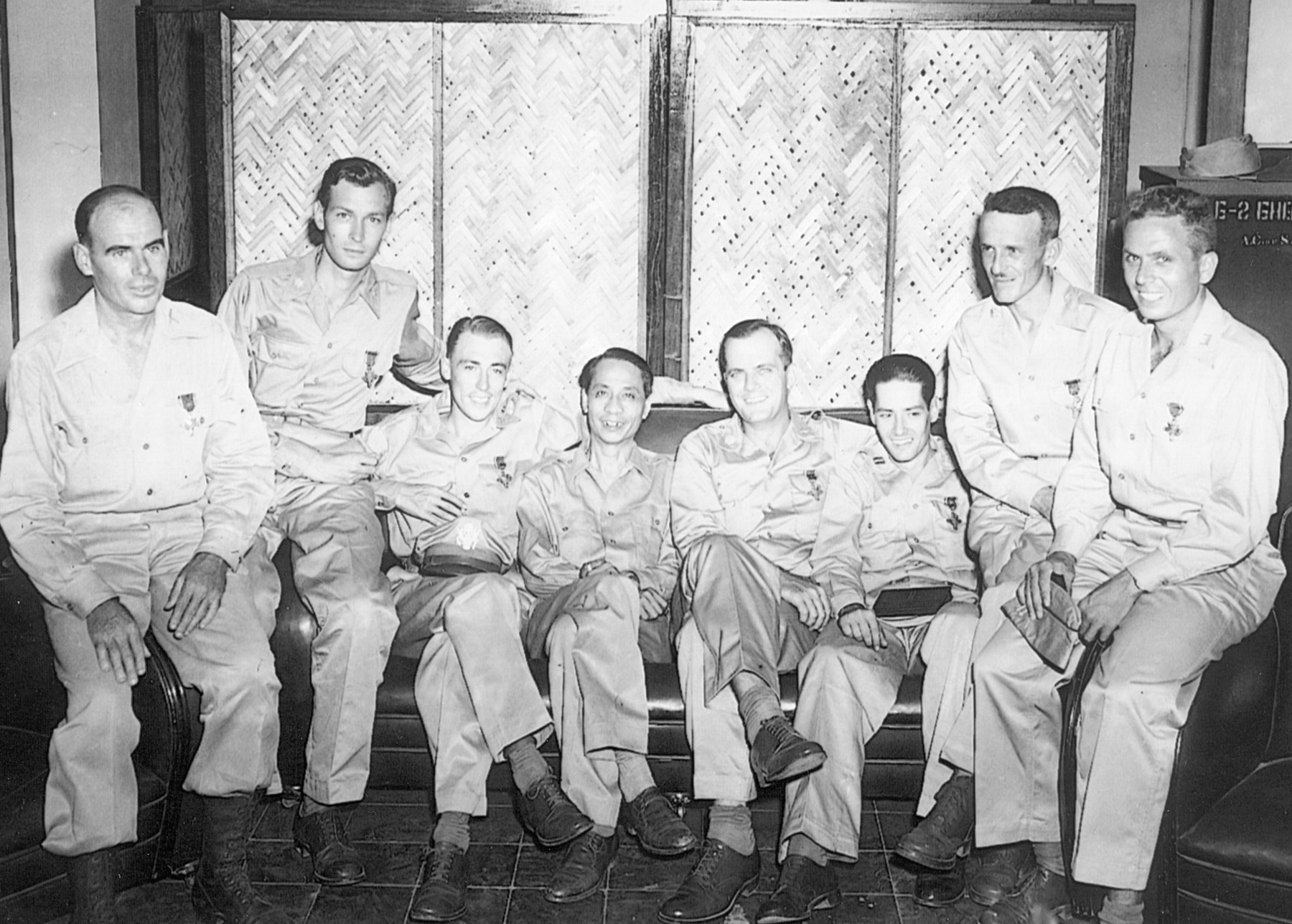
Ramsey Learns of Executions
In September Ramsey learned that Charles Putnam, the leader of the guerrillas in the northern provinces of central Luzon, had been captured, then executed after torture. He also learned that one of his own men, a Filipino colonel named Pat Gatson, had been executed. Gatson had been imprisoned in Fort Santiago for more than seven months and had planned an escape. One of the other guerrillas had been made a trustee by the Japanese and had managed to kill a guard and steal his keys, then began unlocking the cells one by one. Unfortunately, the freed prisoners were unable to control their enthusiasm and a general riot broke out, alerting the Japanese, who began shooting the unfortunate men. Gatson was captured with the cell keys in his hand, was given a perfunctory trial, and was then shot. Ramsey sent his name to MacArthur along with a recommendation for a Distinguished Service Cross.
During the late summer and early fall of 1944, radio traffic from MacArthur’s headquarters increased. With the date for MacArthur’s return to the Philippines drawing nigh, it was important to know the strength of the Japanese forces on Luzon to determine whether troops had been moved south to Leyte, where the invasion was to take place. The role of the guerrillas took on new importance as they not only served as a source of information, but an increase in their activities would draw Japanese attention that otherwise might have been devoted to repelling the Allied invaders.
The day after New Year’s the Japanese attacked the headquarters of the central Luzon guerrilla force. Miraculously, Ed Ramsey and his men managed to hold off the Japanese and make their escape with minimal casualties. They withdrew into the leper colony at Tala and established a new temporary headquarters.
On January 8, 1945, the guerrilla commanders on Luzon received the most exciting message of the war from MacArthur. The order instructed them to begin an all-out offensive against the Japanese, to attack the enemy in every way possible, and to destroy his means of making war. The Americans knew instantly what the message meant—that the invasion of Luzon was about to begin. The following day, the Allies landed at Lingayen Gulf.
Major Ralph Lapham’s guerrilla force was in a position to attack the Japanese facing the invasion beaches at Lingayen Gulf from the rear, but the Japanese elected to withdraw into the mountains and fight the Americans inland instead of on the beaches. General Walter Krueger’s U.S. Sixth Army walked ashore against only light resistance and began advancing southward toward Manila. General Douglas MacArthur had officially returned to the Philippines in October 1944 at Leyte, but he also came ashore in the second wave at Lingayen Gulf and walked through the surf toward a group of Filipino guerrillas who were watching from the beach.
Guerrillas’ Role Changes
With Allied troops ashore on Luzon and advancing inland, the role of the guerrillas changed as they joined the Americans as guides and in the military role for which they had trained. On January 31, the American guerrilla leaders on Luzon were placed under General Krueger’s command. Because of their proximity to the beachhead, Major Lampham’s guerrillas were the first to fight alongside the Americans on Luzon. His intelligence and assistance helped the U.S. Sixth Rangers rescue survivors of the Bataan Death March who were being held at Cabanatuan. Major Boone’s guerrillas played a part in the second American landing at Zambales.
After becoming part of the Sixth Army, Major Edwin Ramsey decided to move his headquarters closer to the line of advance of the 37th Infantry Division. During the move from the leper colony to the village of Meycauayan on the main road to Manila, he had one last encounter with the Communist Huks, who attempted to force him to disarm his men.
Ramsey managed to convince the Huks officer that if any attempts were made against his life or those of his men, MacArthur would take a personal interest (which was a bluff, but probably true). Ramsey’s first contact with the fresh American troops was not pleasant. It was with a general officer who was mainly interested in a photo opportunity. When he asked for food and equipment for his men, he was told that there was none and that he would have to talk to the corps commander, General Oscar Griswold. Griswold was more cooperative. He told his chief of supply to open up his depot to the guerrillas.
Deprivation Takes Its Toll
The years of deprivation had been hard on the Americans who had remained in the Philippines as leaders of the resistance. Lack of food and living under primitive conditions with poor medical attention had taken a toll, emotionally as well as physically. Most suffered the ill effects of malnutrition, and many were suffering from a variety of tropical diseases, including malaria and dysentery. In order to protect them, the Army had not notified their families that the Americans were still alive. Ed Ramsey’s name was on a monument to war dead at the Oklahoma Military Academy from which he had graduated before entering the Army. Although he continued in his role as commander of the Filipino guerrilla forces until May 1945, Ramsey suffered two nervous breakdowns and was finally ordered back to the United States.
General MacArthur took a personal interest in the Americans who had remained behind and the Filipinos they led. He took pains to ensure that all were decorated and promoted to ranks commensurate with the tasks they had performed in the Philippines. The Filipino and Filipina guerrilla officers were also rewarded with decorations and commissions in the U.S. Army.
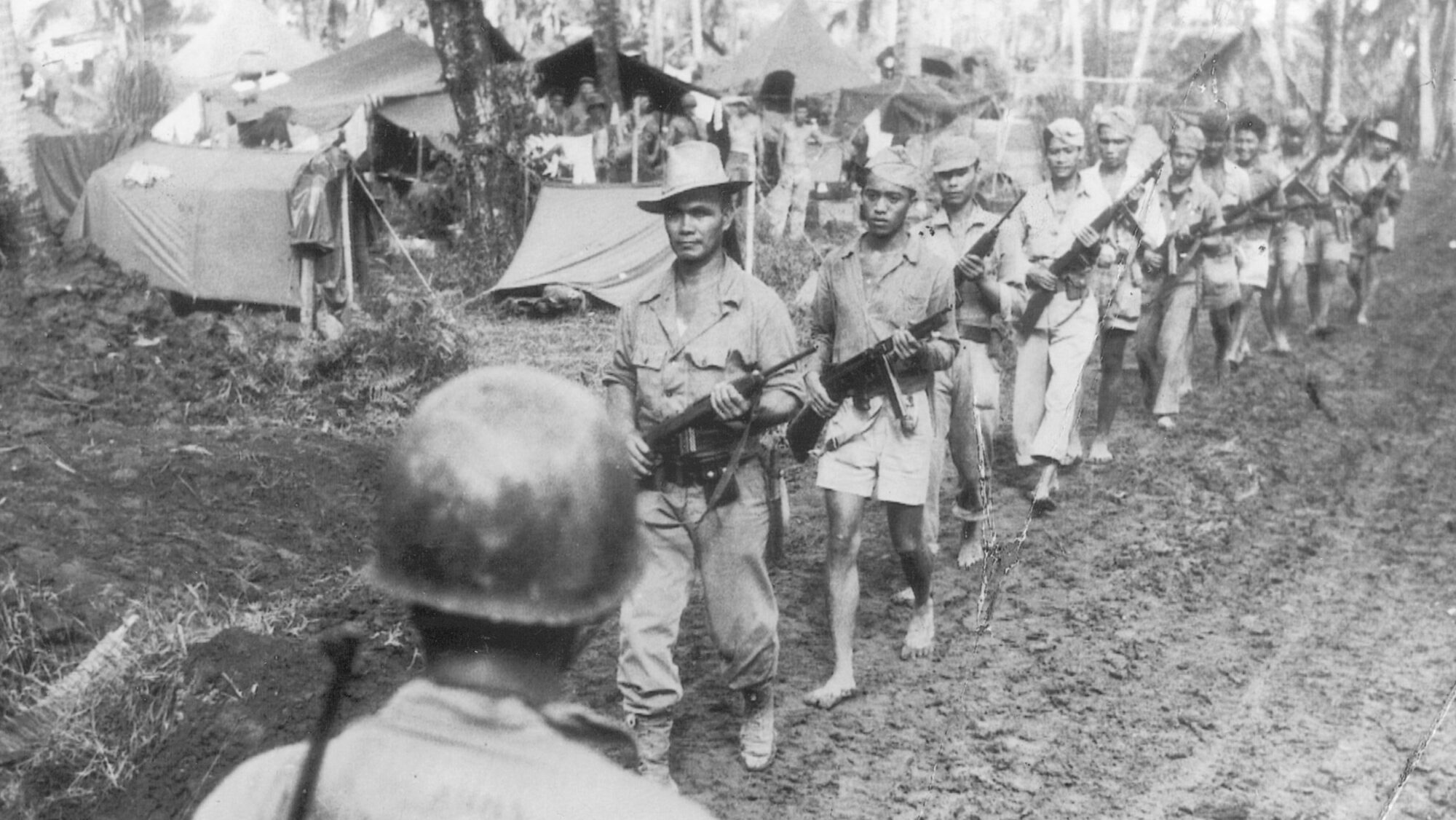
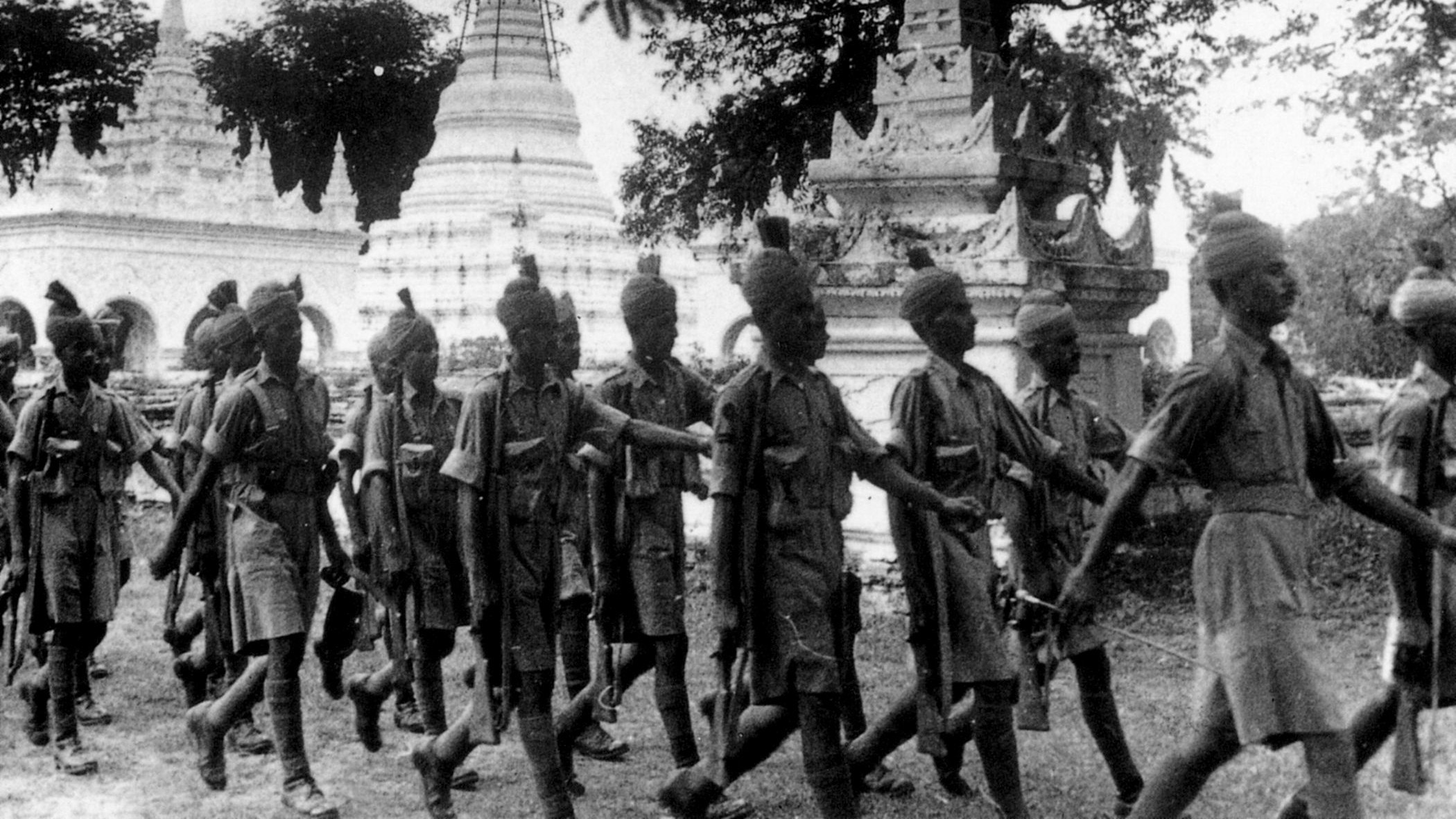
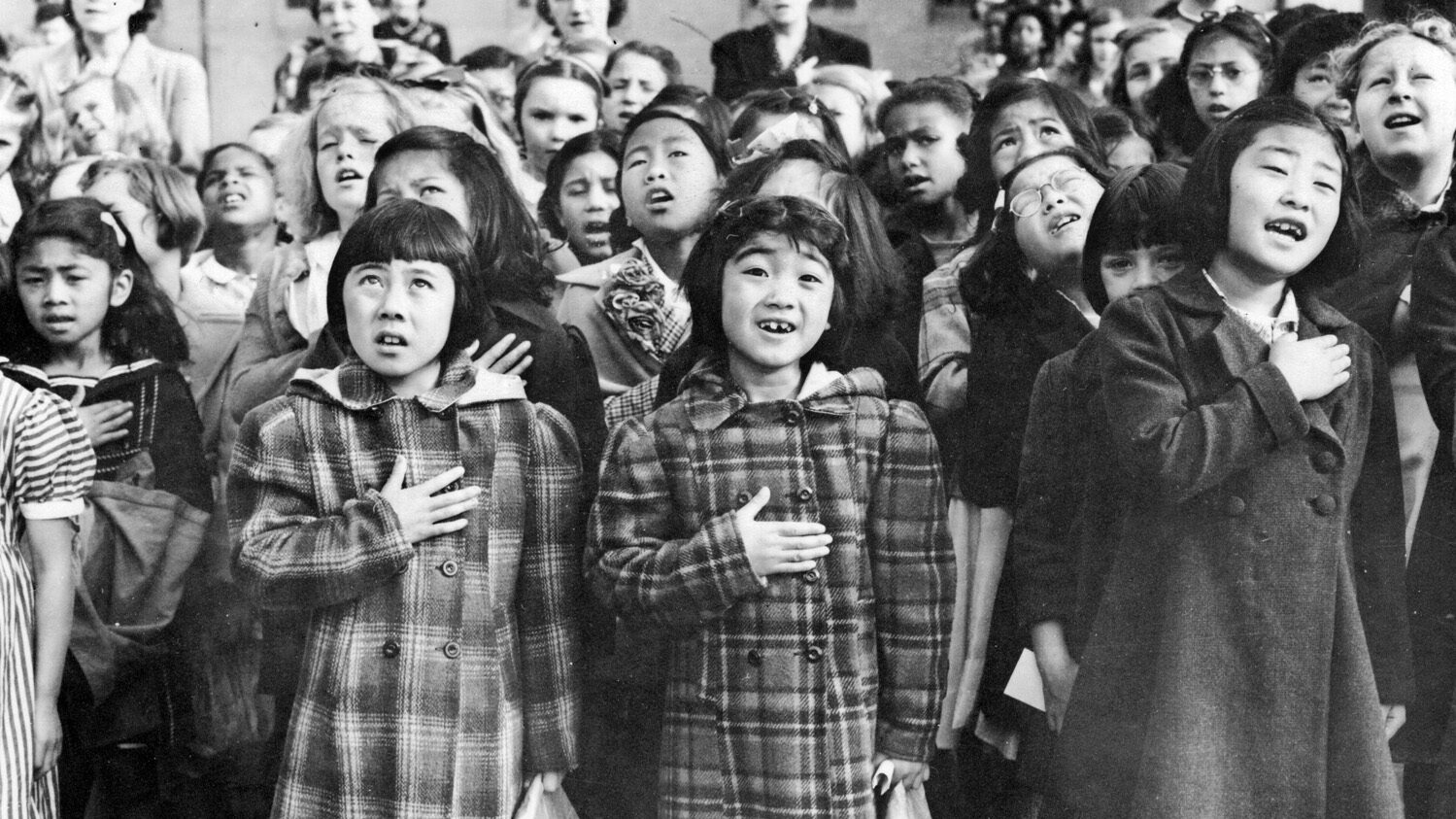
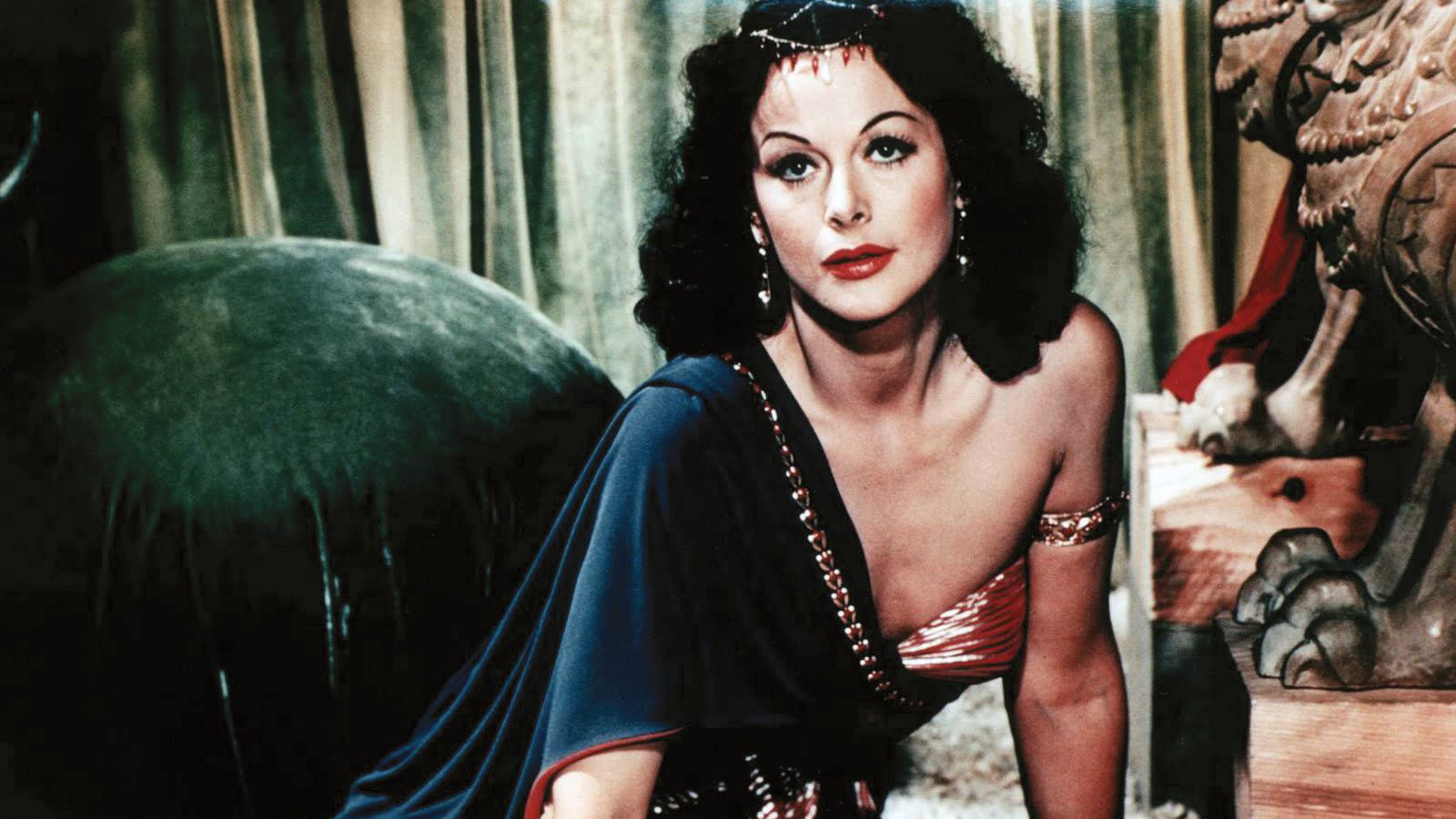
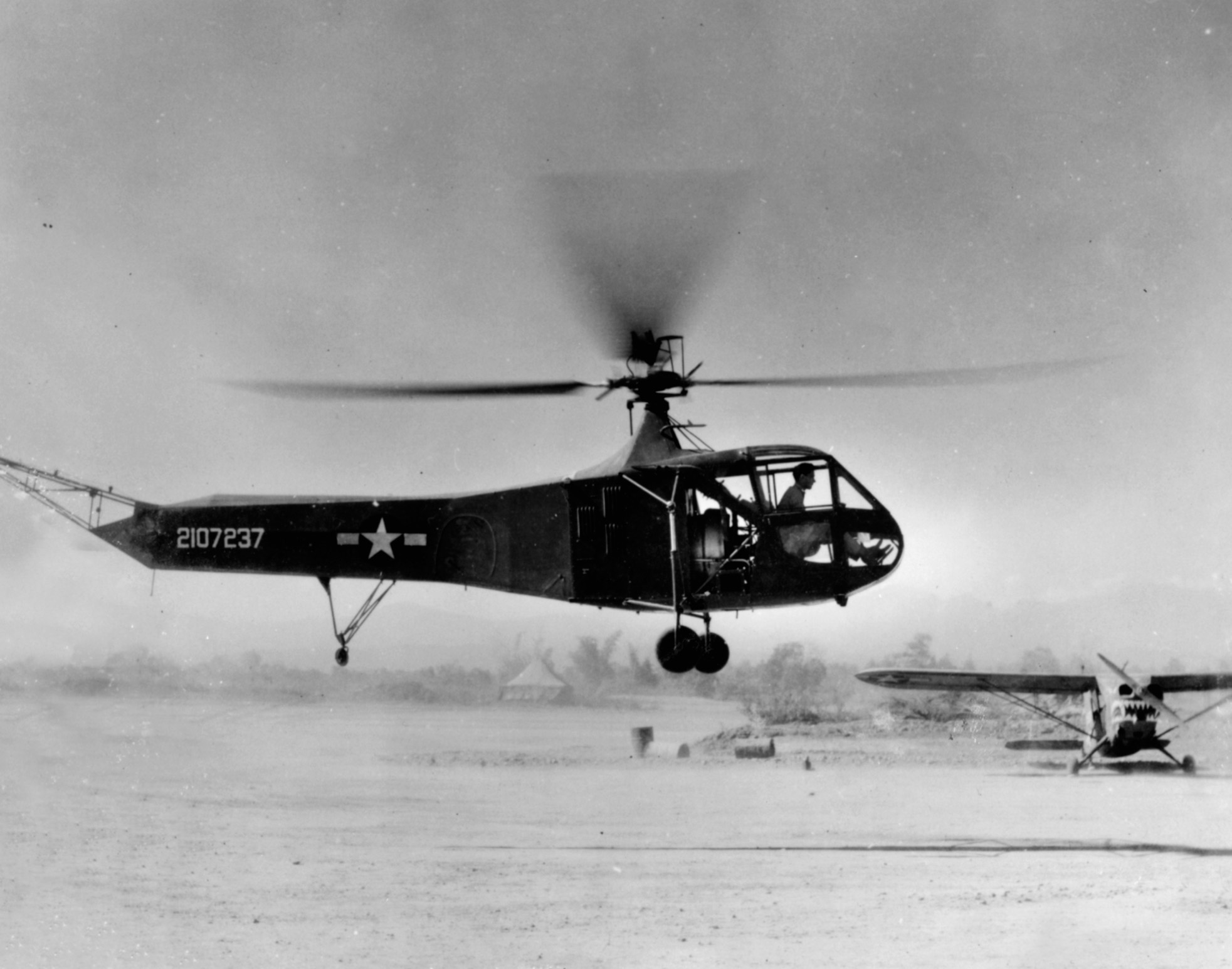
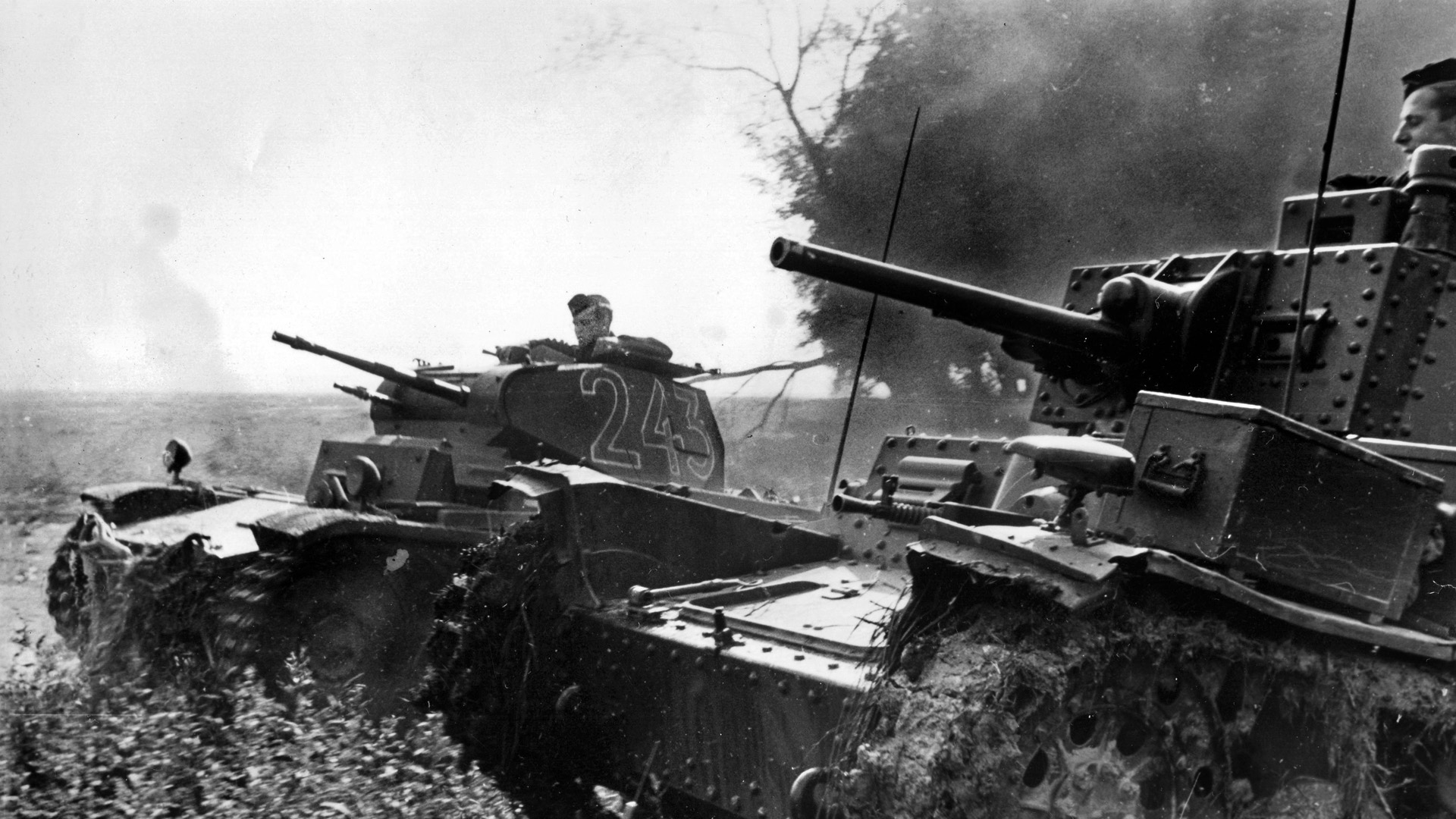
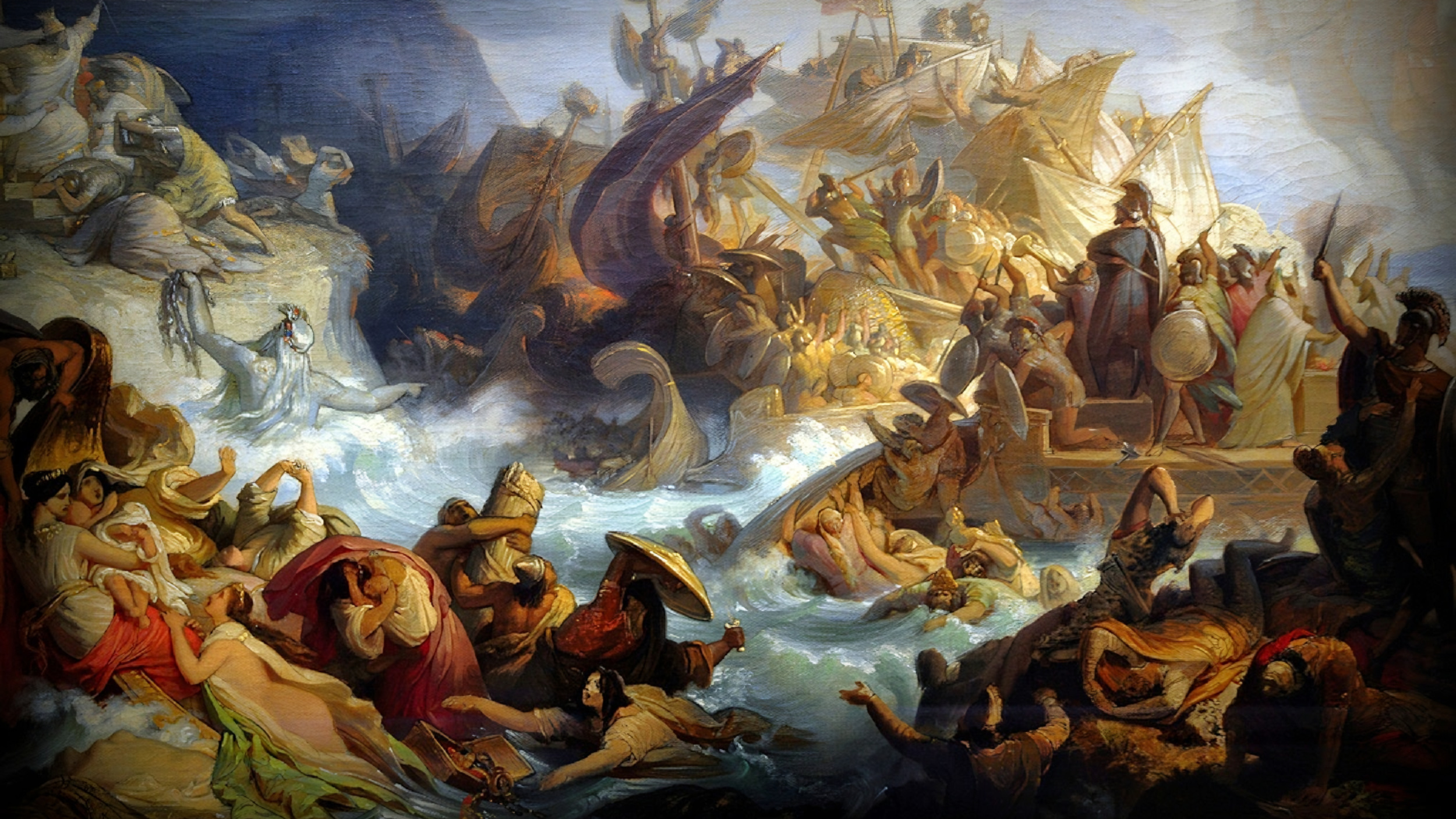
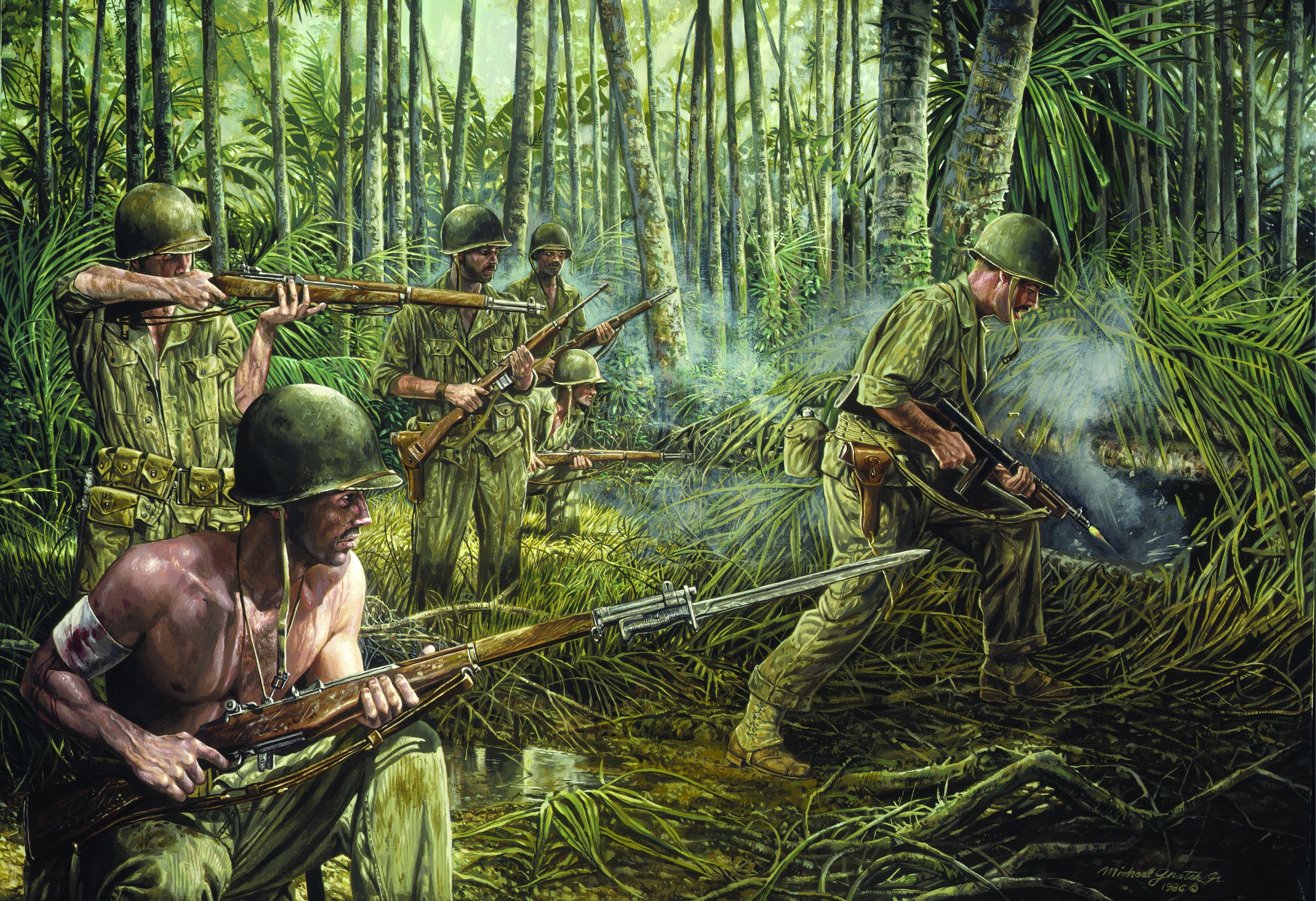
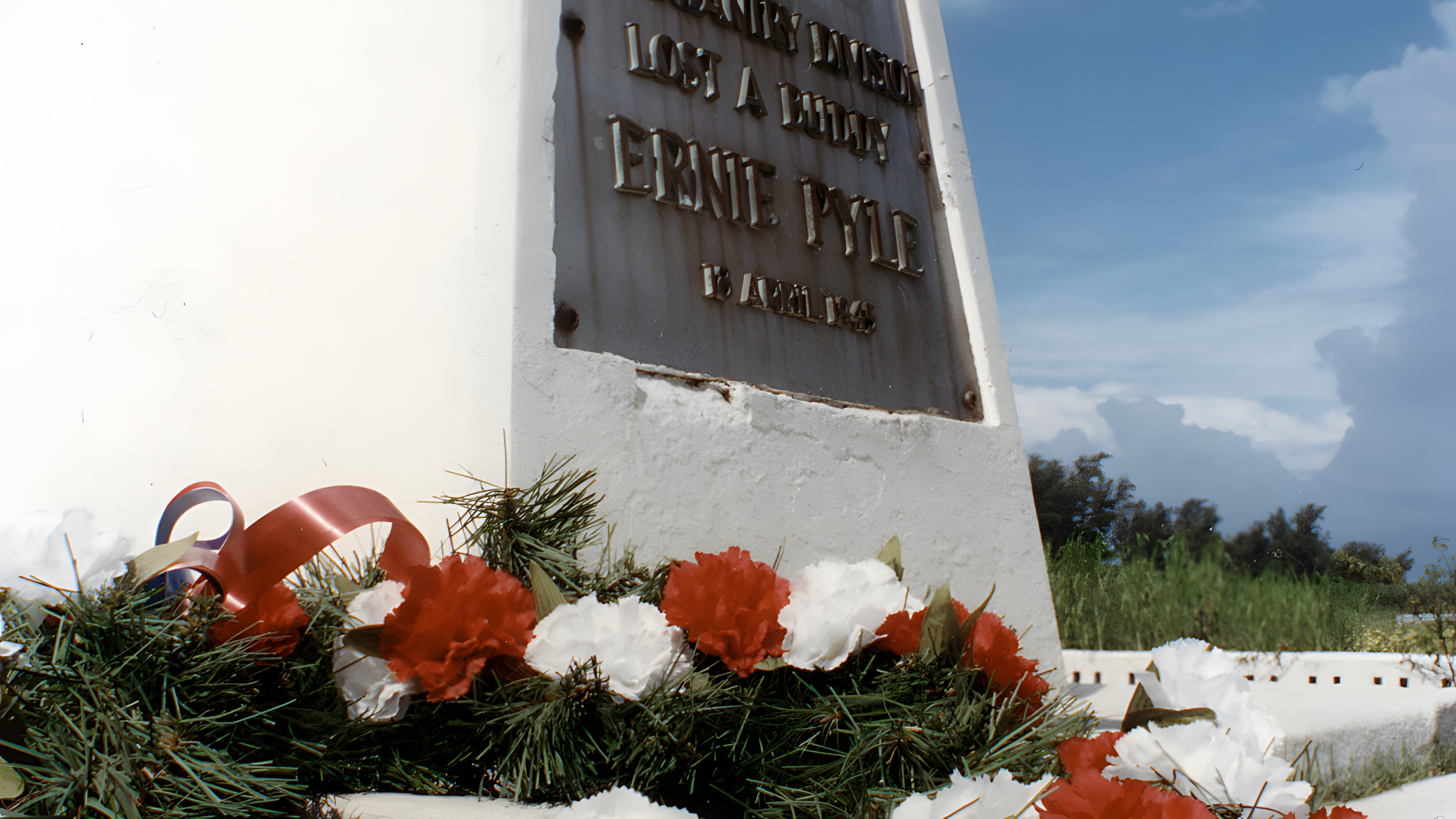
Hello, I am trying to create a shadow box for my dad, can please help me find a LGAF uniform. Thank you in advance.
My late father-in-law, a low level Commonwealth employee, and his family were internal refugees on Mindanao during the war. Was more difficult than Luzon as supplies and arms were hard to come by. Only consolation was that it was hard for the Japanese to mount large operations because of jungle conditions and the hostility of Moro tribesmen.